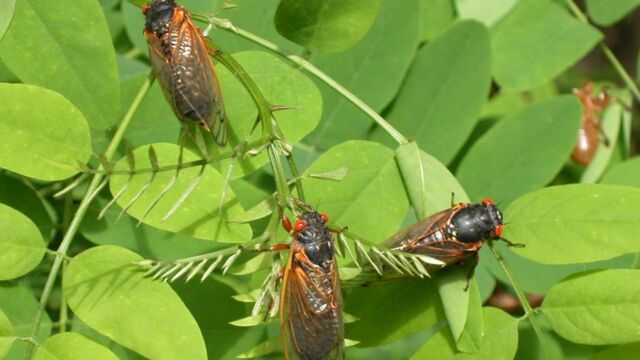Before taking over the streets and gardens, cicadas have already conquered the media, social networks and conversations, especially in the eastern United States.
Discover our latest podcast
It is here, in a region covering some 15 states, that Brood X is expected. According to scientists, that means billions upon billions of nymphs, who spend almost two decades underground before emerging, moulting, mating, laying eggs and then dying, all to the deafening clamour of males serenading females.
The last time they emerged, in 2004, Tony Blair was still Prime Minister, Facebook had just been created and Greece was preparing to host the Olympic Games.
A long awaited event
Their mass emergence is expected soon. When exactly? It's hard to say, as it will depend on weather conditions, especially the ground temperature, and a probable cooling could delay their release. The latter could occur in a few days, sometime around mid-May.
Residents have been watching for weeks for signs of their arrival, sharing photos of the tunnels nymphs have dug to make their way to the surface once they are ready to burst forth.
Tim Pfeiffer began reporting the event on Twitter. The 28-year-old, who lives in Silver Spring, Maryland, near Washington, D.C., posted videos of some of the critters crawling around on his porch a little ahead of their peers.
He confides he is 'more worried than excited,' however:
Although they are quite disgusting when they are nymphs, seeing them take on their adult form in less than an hour is fascinating.
Careful cohabitation for a couple of months
For those who want to help document the 2021 invasion and track the cicada populations, an app called Cicada Safari allows you to note on a map the places where the insects have been seen, along with pictures.
On the Nextdoor neighbourhood network, comments on the topic are multiplying, with plenty of advice on how to cohabit peacefully with the cicadas when they fly around ceaselessly.

Buy a protective visor, wear a cap, carry a fly swatter with you and don't roll down your windows when driving.
Indeed, those who have already experienced the tide of cicadas are issuing this warning: don't risk an accident by allowing yourself to be startled at the wheel, because of some insects that have come to share a moment with you inside of your car.
On a bike, too, you have to be careful, says another Nextdoor user, who urges cyclists to 'pedal slowly' because 'squashed cicadas on bike paths are very slippery.'
More interesting than damaging
But let's not forget that cicadas are utterly harmless, and that comparisons with devastating locust swarms, while tempting in these times of pandemic and the prevalent disaster movie atmosphere, do not hold any water whatsoever.
They may well damage a few shrubs, but are not harmful to trees and plants in general.
And 'they don't bite or sting. They're not going to snatch little kids or dogs like the monkeys in the Wizard of Oz,' Michael J. Raupp, an entomologist at the University of Maryland, humorously explained to CBS Baltimore.
'They won't interfere with barbecues either', he added.

Because they feed on 'sap. They are not interested in hamburgers and hot dogs,' he says with jest.
On the other hand, more adventurous people, who may be prepared to transform them into food, can try out the recipes concocted in 2004 by the biologist Jenna Jadin on the Internet: cicadas with mushrooms or chocolate, there is something–almost–for every taste.















